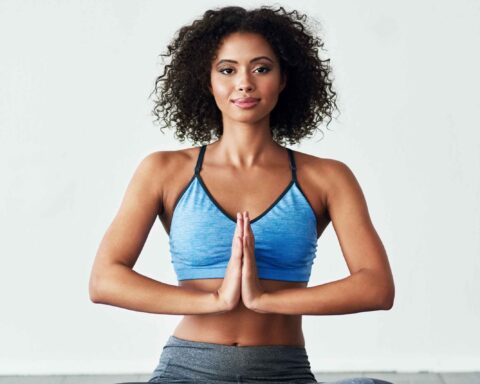Artificial intelligence (AI) has been making its way into various aspects of our lives, and the world of yoga and wellness is no exception.
Many people in the wellness industry are already using AI devices, such as Fitbit and Apple watches, to track their physical activity and monitor their health metrics during yoga practices. Fitbit watches can track heart rate, breathing patterns, and sleep quality, providing individuals with valuable insights into their overall health and wellness. Additionally, some yoga teachers and studios are incorporating AI devices, Alexa, Siri… into their classes to provide real-time feedback and monitor of students’ physical activity and health metrics. By using AI devices in this way, individuals can gain a deeper understanding of their own bodies and tailor their yoga practices to their specific needs and abilities.
Here are a few ways in which AI can be integrated into yoga and wellness practices:
- Personalized yoga programs: AI can analyze an individual’s physical and mental characteristics, including their posture, flexibility, stress levels, and fitness goals, to create personalized yoga programs. This can help individuals to practice yoga in a way that is tailored to their specific needs and abilities.

- Real-time feedback: AI can be used to provide real-time feedback on yoga poses, helping individuals to adjust their posture and alignment to avoid injury and maximize the benefits of each pose. This can be particularly useful for those who are practicing yoga at home without a teacher present.
- Meditation guidance: AI can guide individuals through meditation practices by analyzing their brain waves and providing feedback on their level of focus and relaxation. This can help individuals to improve their meditation practice over time, leading to greater mental clarity and emotional balance.
- Health monitoring: AI can track an individual’s health metrics, such as heart rate and breathing patterns, during yoga and wellness practices. This can help individuals to monitor their progress and identify areas for improvement.

- Virtual reality experiences: AI can be used to create immersive virtual reality experiences that simulate various yoga and wellness environments, such as a peaceful beach or serene forest. This can provide individuals with a more engaging and relaxing experience than traditional video-based yoga practices.
While AI has the potential to enhance yoga and wellness practices in many ways, it’s important to note that it should never replace the guidance of a trained teacher or healthcare professional. AI should be used as a complement to, rather than a replacement for, traditional practices.

In conclusion, AI can be integrated into yoga and wellness practices in a variety of ways, including personalized yoga programs, real-time feedback, meditation guidance, health monitoring, and virtual reality experiences. While AI has the potential to enhance these practices, it’s important to use it responsibly and in conjunction with traditional teachings and practices.








